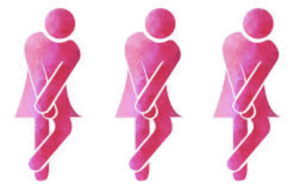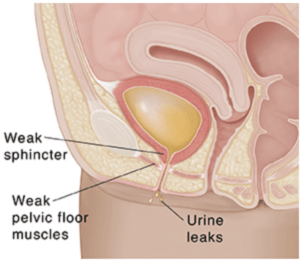Written by Nhuhao Do
Edited by Dr. Tuan Tran
Published on September 25th, 2020
During these uncertain times, we collectively realized how important it is to pay close attention to our health and take care of our body. However, as women, we tend to be wired to put our loved ones’ needs before our own. And over time, some of us unfortunately adapt to ignore those yearnings and neglect to give our body the attention it very much deserves. If you have been experiencing urinary leakage, dryness and/or loss of vaginal tightness and sensation, now is the best time to reach out to us for a lasting solution. 
The idea of starting a conversation about your lady parts may sound uncomfortable, but it is too crucial to pass.
- Did you know that 1 in 3 women suffer from bladder leakage, or medically known as urinary incontinence?
- Not only that, but over 40% of women are affected by vaginal laxity (a feeling of looseness) resulting in a loss of sensation and diminishing orgasm during intercourse.
- Another 50% of postmenopausal women experience dyspareunia, causing vaginal dryness and irritation.
YES. You are not alone!
Urinary incontinence or vaginal laxity may be caused by common life changing events, such as pregnancy, childbirth, aging or menopause. Other causes include overweight, chronic constipation or previous surgeries that involve a woman’s reproductive organs like a hysterectomy.

The most common types of urinary incontinence in women are:
- Stress incontinence. This is the most common type of incontinence in women, especially younger females. It is triggered by physical stress from everyday actions like coughing, sneezing, laughing, exercising or lifting heavy objects. Stress incontinence occurs when the weakened or compromised pelvic floor muscles put pressure on the bladder and the urethra making them work harder. It is more likely in women who have had multiple vaginal births and/or having larger babies.
- Urge incontinence. Often referred to as overactive bladder, this incontinence creates a sudden and intense urge to urinate. Women who experience urge incontinence may have to urinate often throughout the day and overnight for over eight times a day. Leakage can happen unexpectedly, such as during sleep, after drinking water, or when touching or hearing running water. While it is more common in older women, the exact causes are not well understood. However, physical conditions like brain or nerve damage can play an important factor.
- Mixed incontinence. Patients with mixed incontinence may experience a combination of symptoms and triggers from two or more types of incontinence, with stress and urge incontinence being the most common combination.
Like the skin, vaginal tissue loses its youthful strength and vitality when our collagen production decreases with age. This leads to a sensation of looseness (laxity) and unwanted changes in appearance. Even without experiencing urinary incontinence, these bothersome conditions can cause profound loss of pleasurable sensation and satisfaction with intercourse.
Why suffer in silence when these conditions can be resolved effectively?
At Tran Plastic Surgery, we are thrilled to present a little sneak peek into our latest addition to our list of advanced non-surgical procedures.
Wondering what’s the name of this procedure? Hold your horses, beautiful. Our team will reveal the exact name of the procedure and our partner company very soon in the upcoming video on our YouTube Channel where we give you insights into our surgical practice.
What we can offer you is a painless, one-time session that resolves all your problems mentioned above. This procedure is directed by Dr. Tuan Tran, a triple board certified plastic surgeon, who has years of experience performing major surgery cases at Kaiser Permanente, Fountain Valley Regional Hospital, Orange Coast Memorial Medical Center, Hoag Memorial Hospital and at his very own practice. The procedure is performed by Dr. Tran himself and by his team of professionally trained staff who are best at tailoring to your specific needs.
Click here to watch Dr. Tran explaining more about the technology behind this procedure and how it affects your body on the cellular level. As you may learn from the video, crycogen-cooled monopolar radiofrequency technology was designed to penetrate the deep tissue for maximum results, while cooling and protecting your skin surface simultaneously. This quick treatment lasting between 45 to 60 minutes can indeed bring you a permanent solution.
If you have read this far, I think it’s safe to speculate that you or someone you know might be interested in receiving or knowing more about our new procedure. Between you and me, I’m urging you to reach out to us today to talk about your conditions. In the next few days after this article is live, we have a special surprise for you before the service is officially launched to the public. And don’t worry, this is not a sales pitch but rather a gift to our most dedicated patients before everyone else jumps on this wagon.
Feel free to send us a message on our website, DM us on Instagram @drtuantran or Facebook @drtranplastic and of course call us at 714-839-8000.
All rights reserved © Tran Plastic Surgery 2020
References:
Bavendam, T. G., & Van Drie, D. M. (Eds.). (2019, January 31). Urinary incontinence. Retrieved September 17, 2020, from https://www.womenshealth.gov/a-z-topics/urinary-incontinence
Dancer, R. (2019, January 08). Urinary Incontinence Treatment. Retrieved September 17, 2020, from https://www.realself.com/urinary-incontinence-treatment


